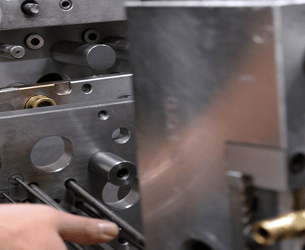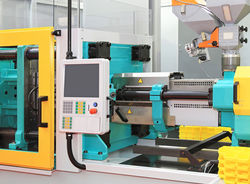
Rather than talk business, politics, sports, or daily workplace situations common to the theme, lets vent on the importance of properly venting your injection molds!
While working with molders daily, I often encounter a general problem description that includes burned or degraded materials. If you see evidence of burned or degraded material, first analyze the defect and check the mold, to confirm adequate venting. As much as I would like to help, unlike nearly all other forms of degradation type defects, a purging compound simply won’t prevent or make this one go away.
A poorly vented tool will produce a specific part defect that resembles a short shot, evidenced by an area of charred or burned material. Depending on part color, brown streaks repeated in the same location or in a dark part, this can show up resembling a flow line. Another clue to a damaged or plugged vent is a sudden need for increased injection pressure to fill out the cavity, a need to overcome the resistance by the trapped gas.
What is venting and what does it do?
It allows these hot gasses that precede the polymer to flow front to escape. The gasses are an inherent byproduct of heating the polymer into a molten state. The same smoke and vapor you see when purging out of the nozzle.
As this gas accompanies the plastic material upon injection into the cavity, it needs a place to go! Especially in areas where there are thickness changes or wall sections taper down and become thin. Really anywhere in the cavity where there is an end of the flow fronts.
Vents need to be carefully machined. Just remove enough steel to allow gas to have an escape route and exit without allowing the material to fill. As an incorrect or over-sized vent, will make a tiny piece of flash in the completed part.
Places to vent include ejector pins and along outside edges of the parting line. Consult your production resin supplier on proper vent size or depth for the material. Mold flow software is helpful in predicting locations prior to the build phase of a new mold. If adding a vent to an existing mold, stay steel safe until you have trialed without error (or recurrence of the defect). It is highly recommended your in-house tool room or process technicians are trained and equipped to diagnose and solve venting related problems should they occur over the course of production runs.
In closing, hopefully venting on this subject will help you to produce more defect free and profitable production runs.
It’s great to keep an eye on price, but often cutting corners will end up costing you over time.







Comments